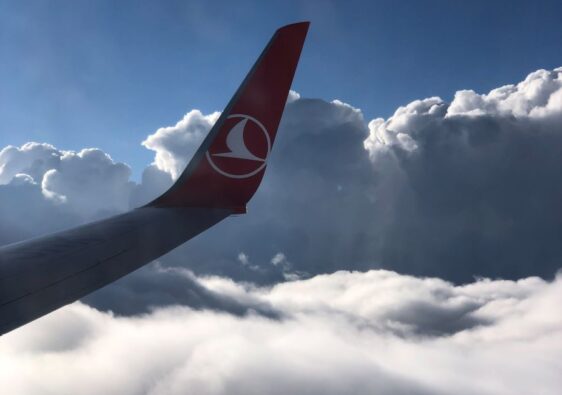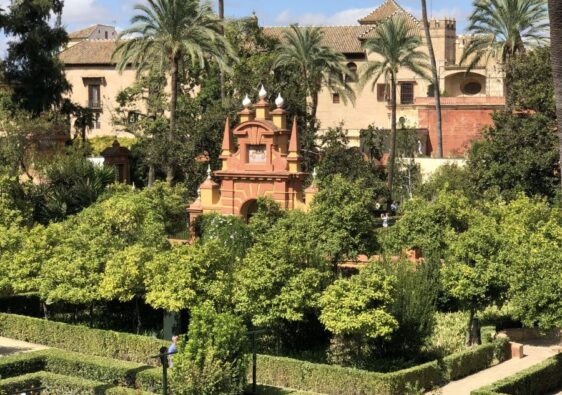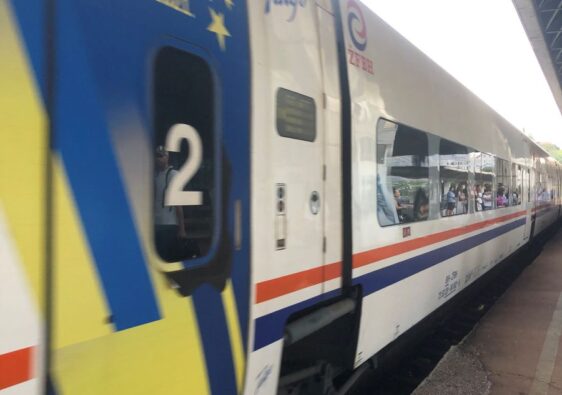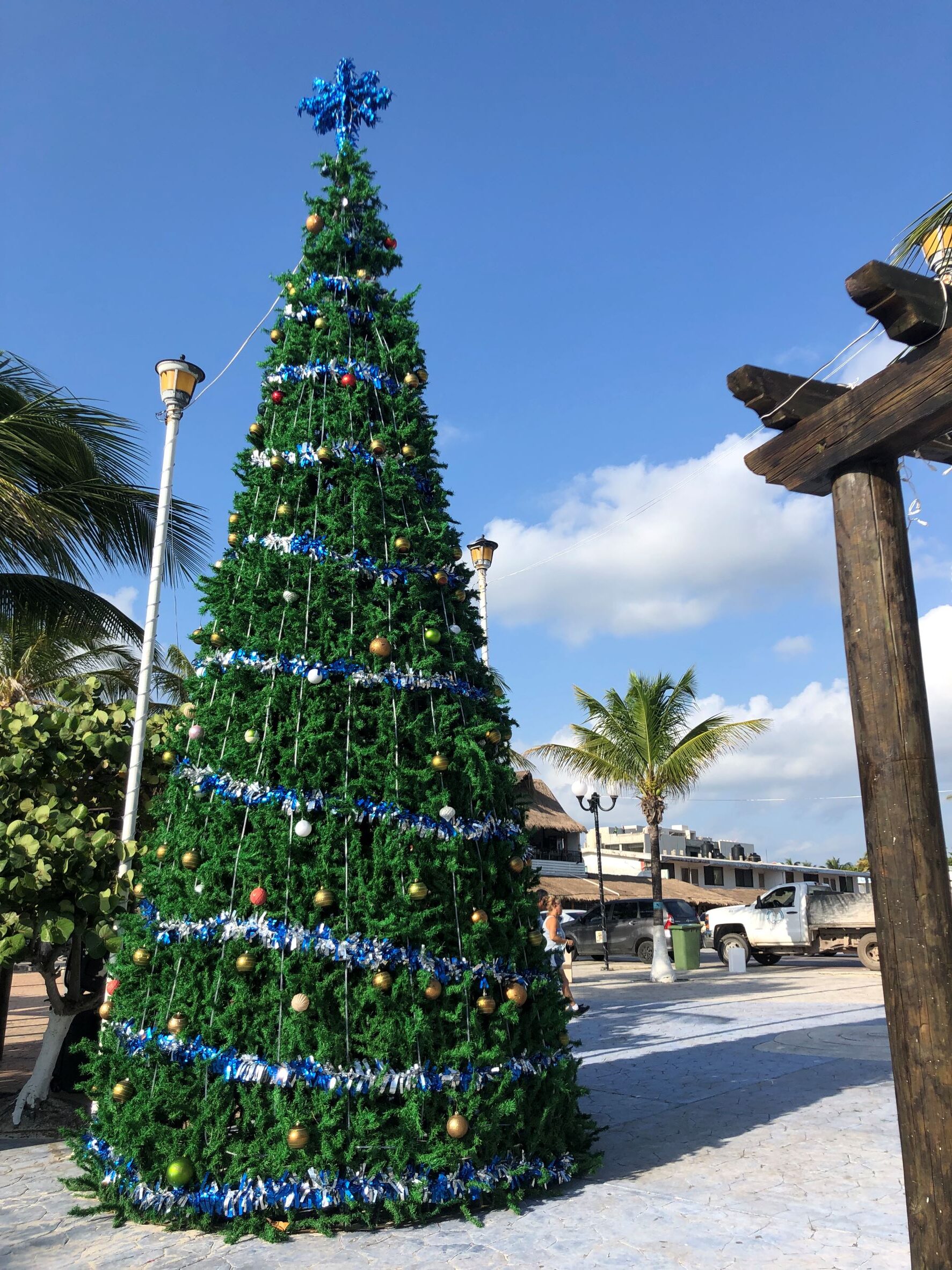When I arrived for the first time, I chose to stay in Senglea. Without knowing it at the time, that proved to be a tremendous boon for me. I was instantly immersed in one of the most historic areas on the island. Should you stay in the Three Cities of Malta? Let me show you each one then you can decide.
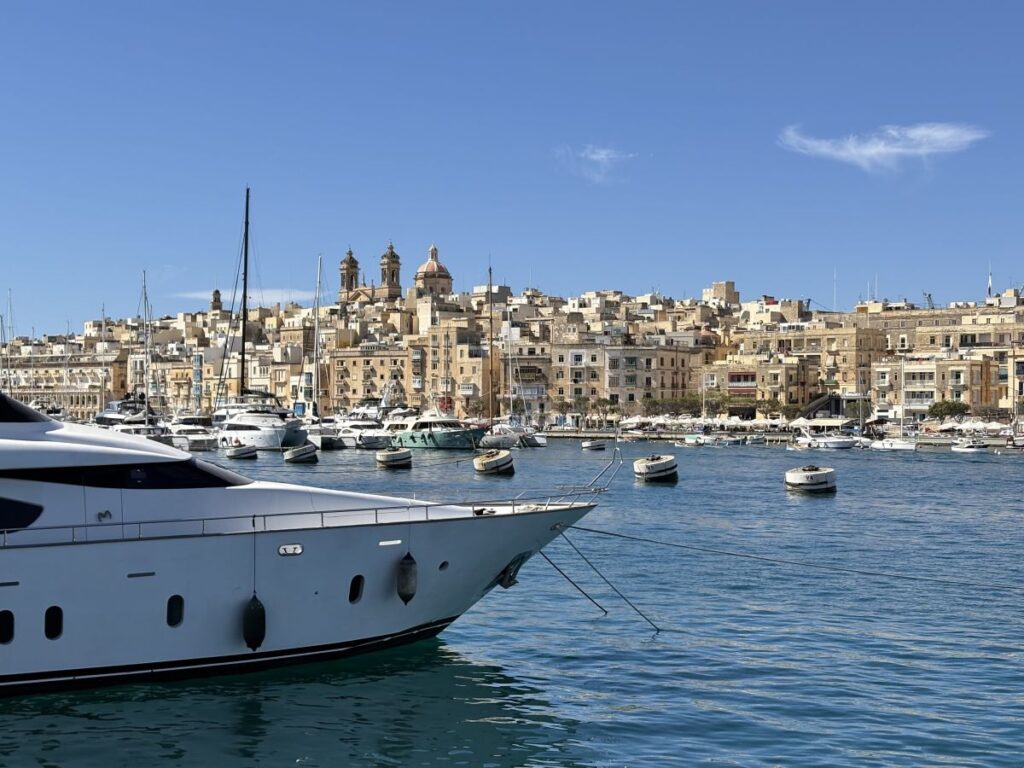
Brief History
The Three Cities are situated directly across the Grand Harbour from the capital city Valletta. Two are on peninsulas and the third joins those where they meet at the middle. All are surrounded by a massive fortification called the Cottonera Lines.
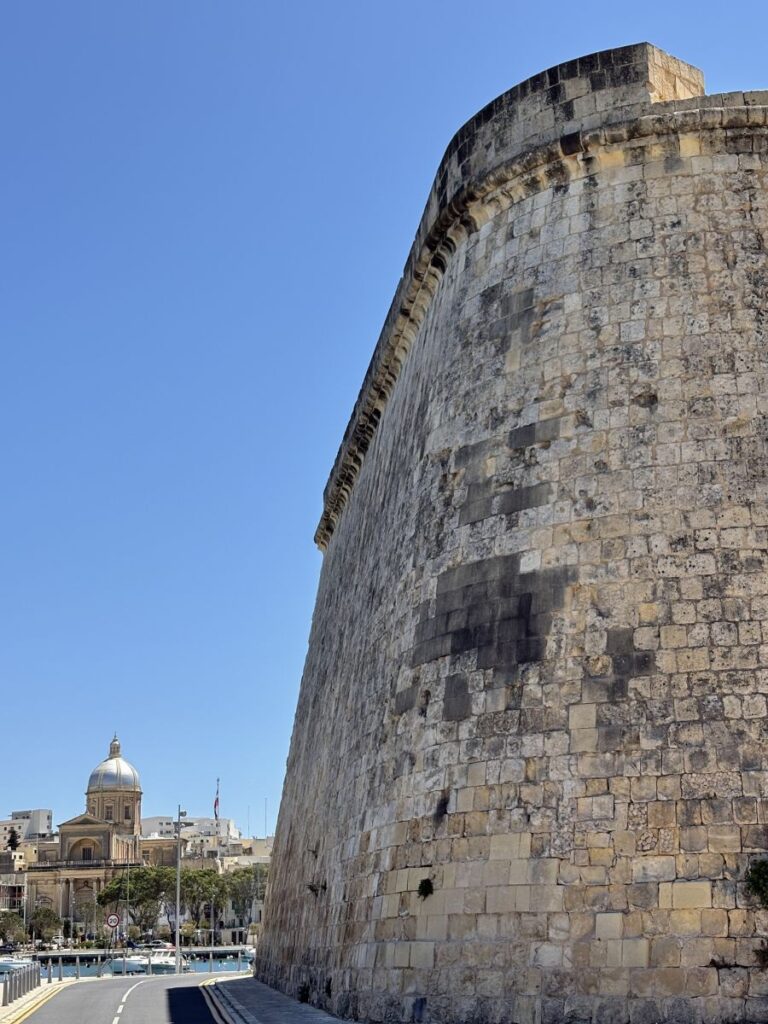
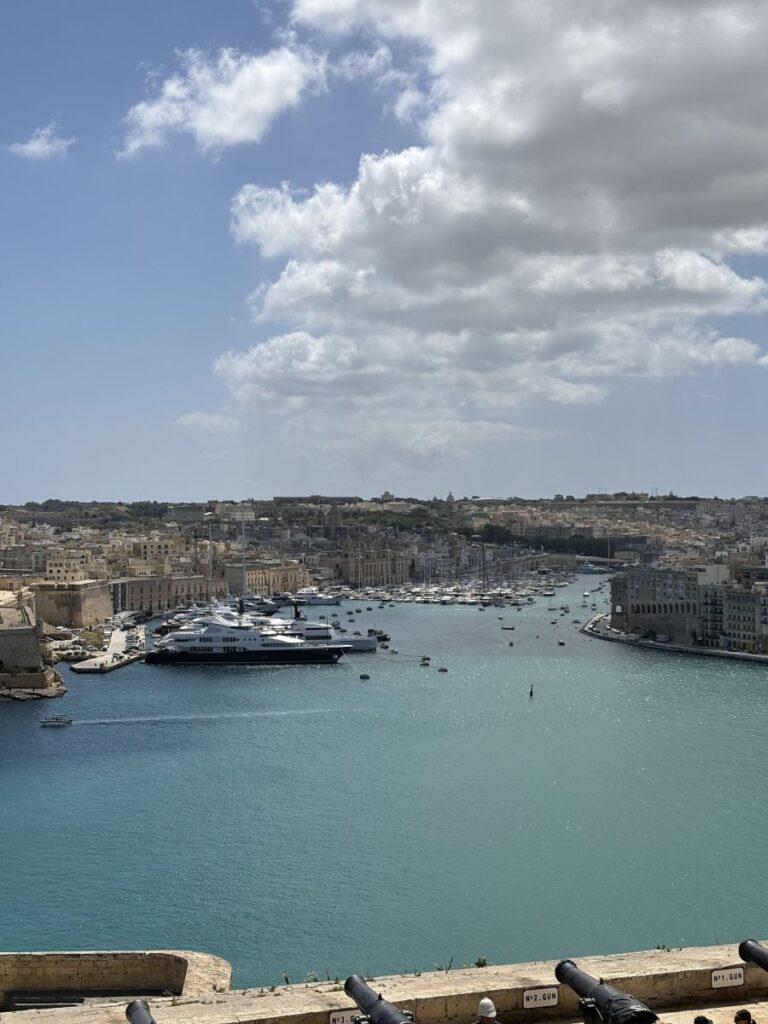
These cities each have two names and are Senglea or L-Isla, Birgu or Vittoriosa and Bormla or Cospicua. It is here that the Knights of the Order of Saint John first landed in 1530 and made not only their homes, but Birgu was made the capital city too.
Birgu/Vittoriosa
Positioned on a finger of land that juts into the harbour is Birgu. At the tip is Castle San Angelo, a fortification that was constructed early on, to ward off attacks by the Ottomans. Across the drawbridge, is the city of Birgu.
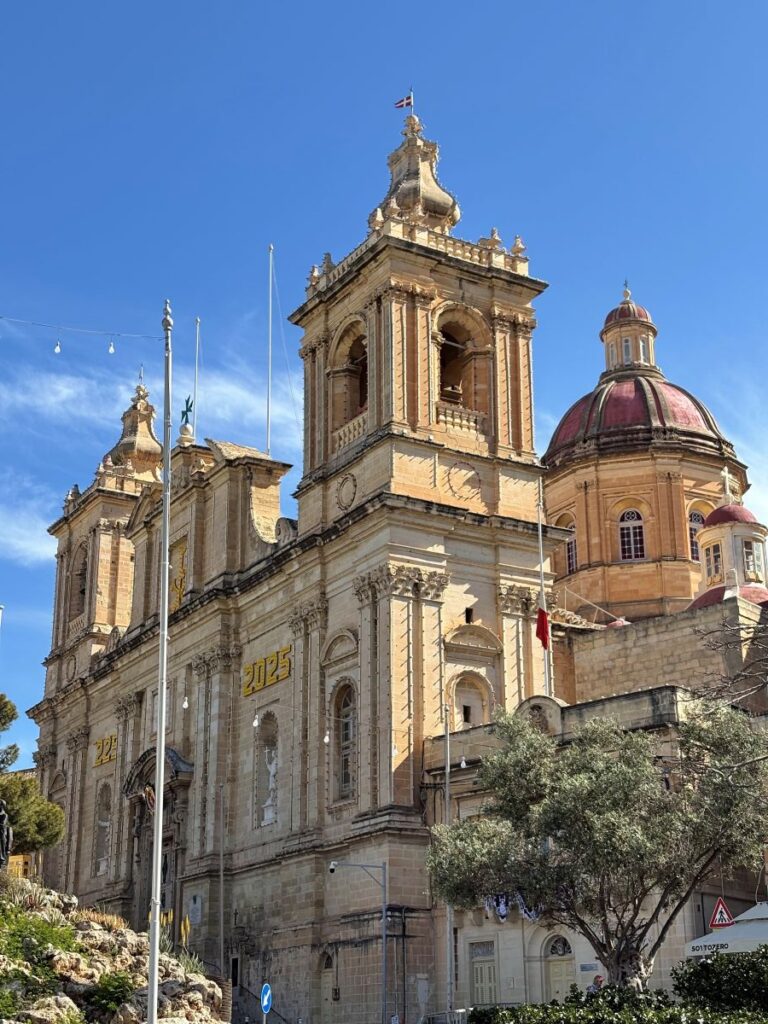

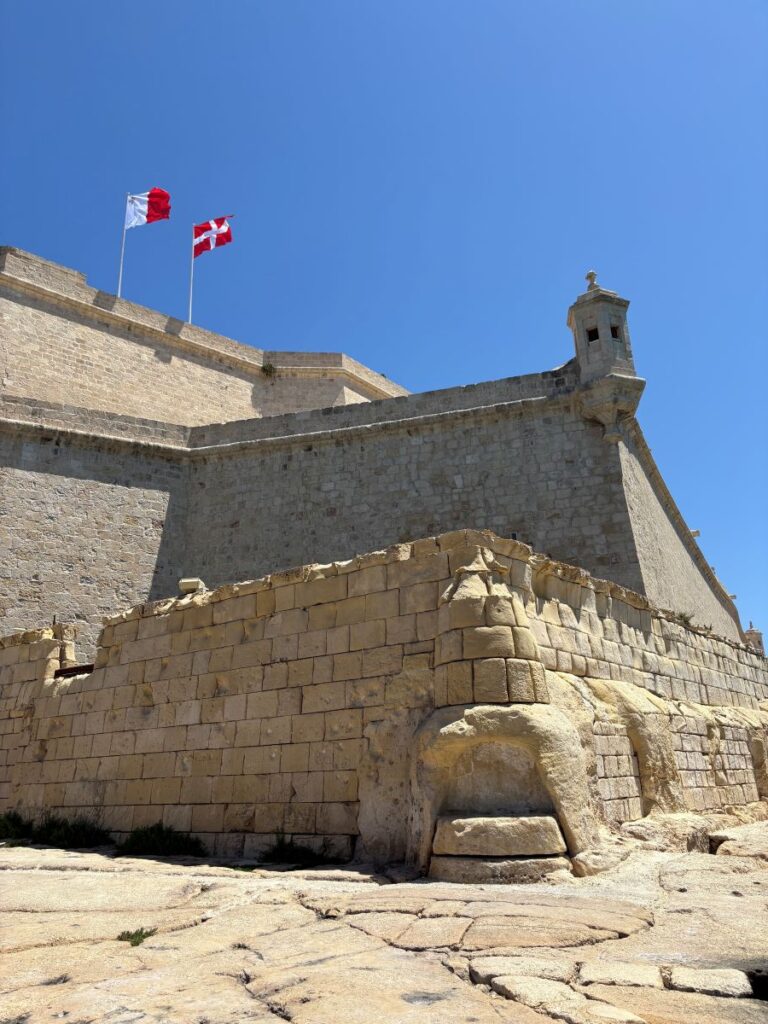
When the Knights arrived, they made this city their headquarters, and as such, moved the capital from the inland city of Mdina to Birgu. Prior to 1530, there was a medieval town here and many of the oldest buildings were incorporated into the new city.
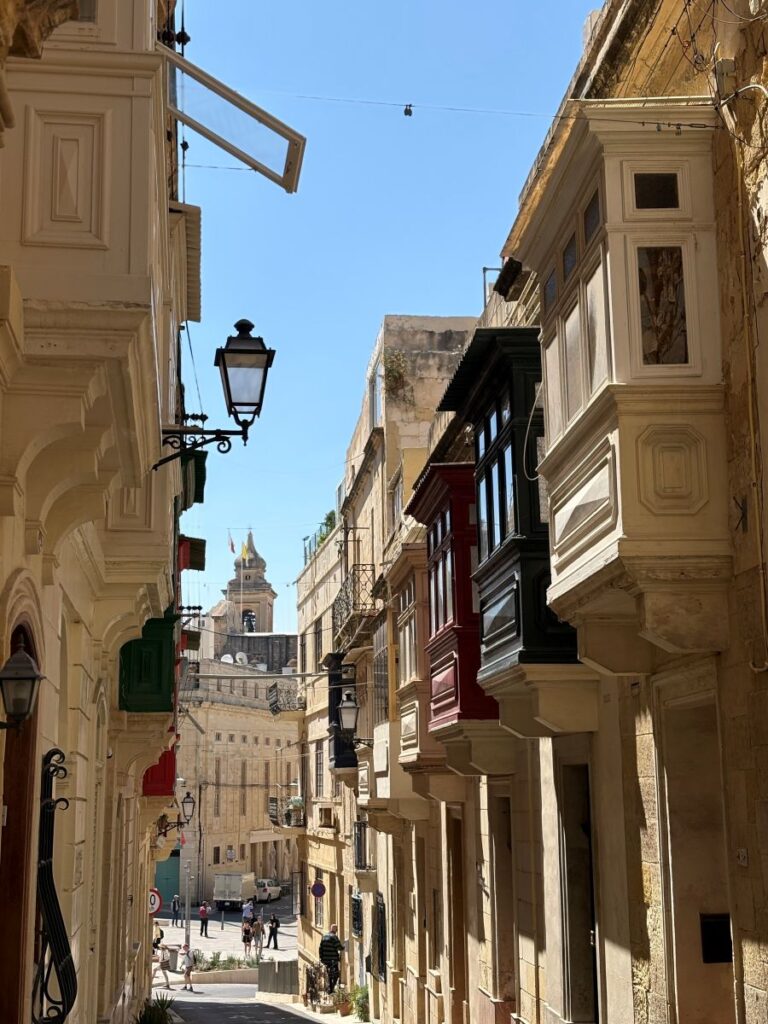
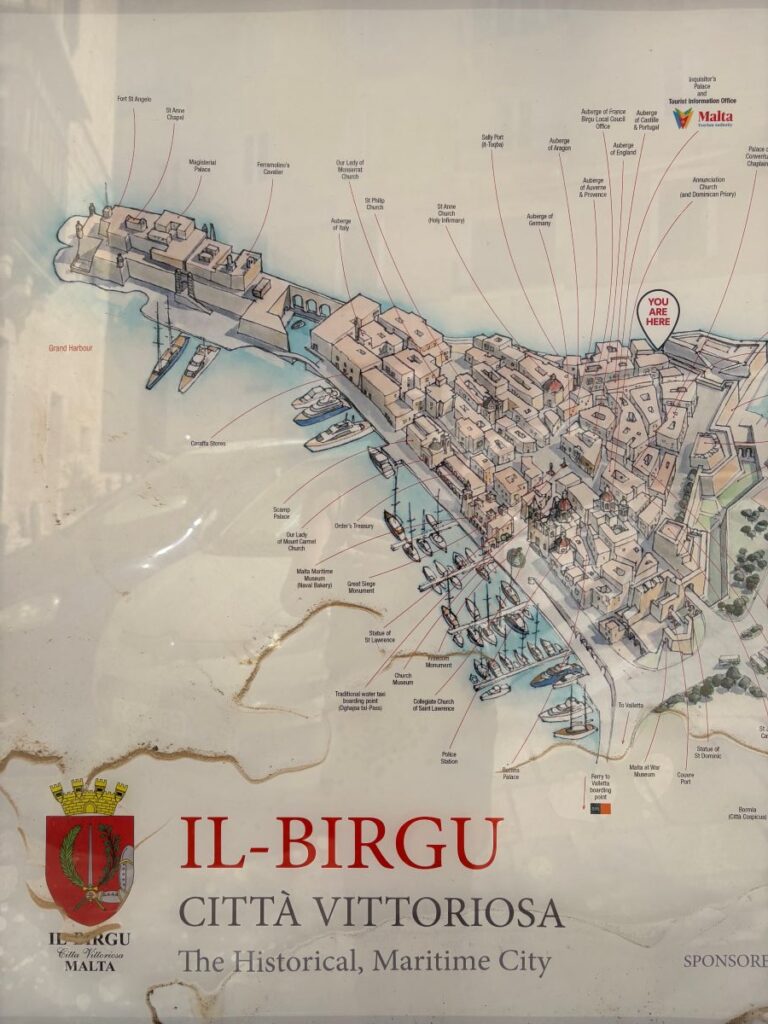
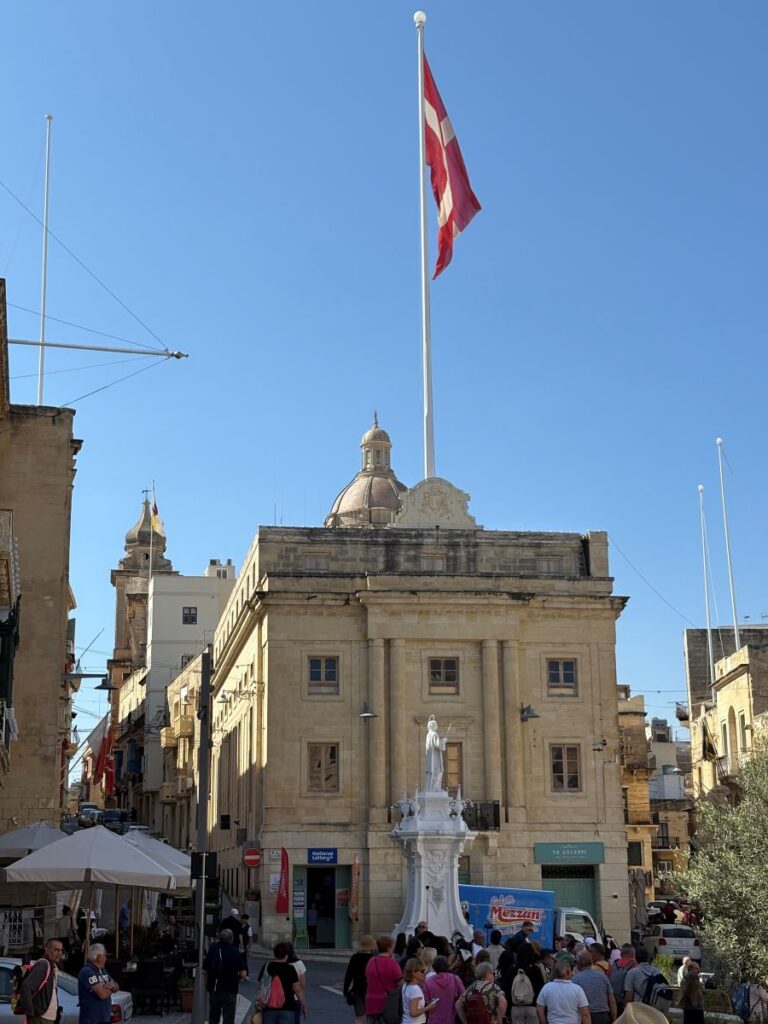
Birgu has a particular draw for tourists as it houses not only the fort, but the War Museum and the Maritime Museum. Today there is a little train that drives tourists around. The narrow streets are often filled with hoards of tour groups and from signs posted by the locals, it is clear that their once quite little enclave, has changed.
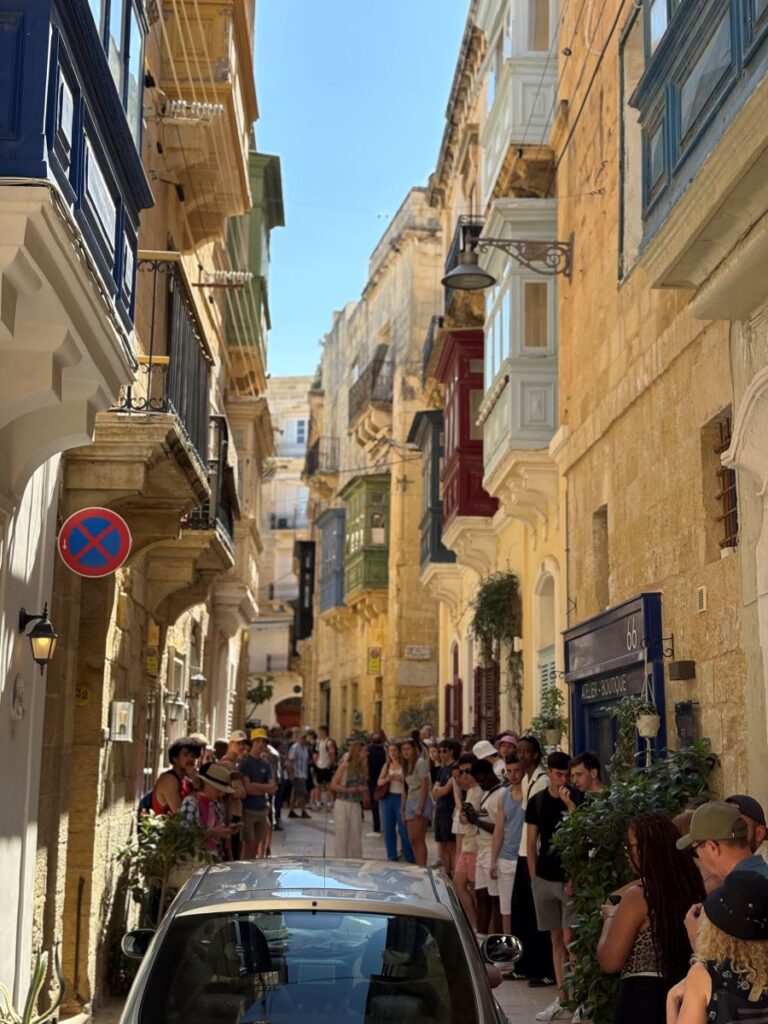

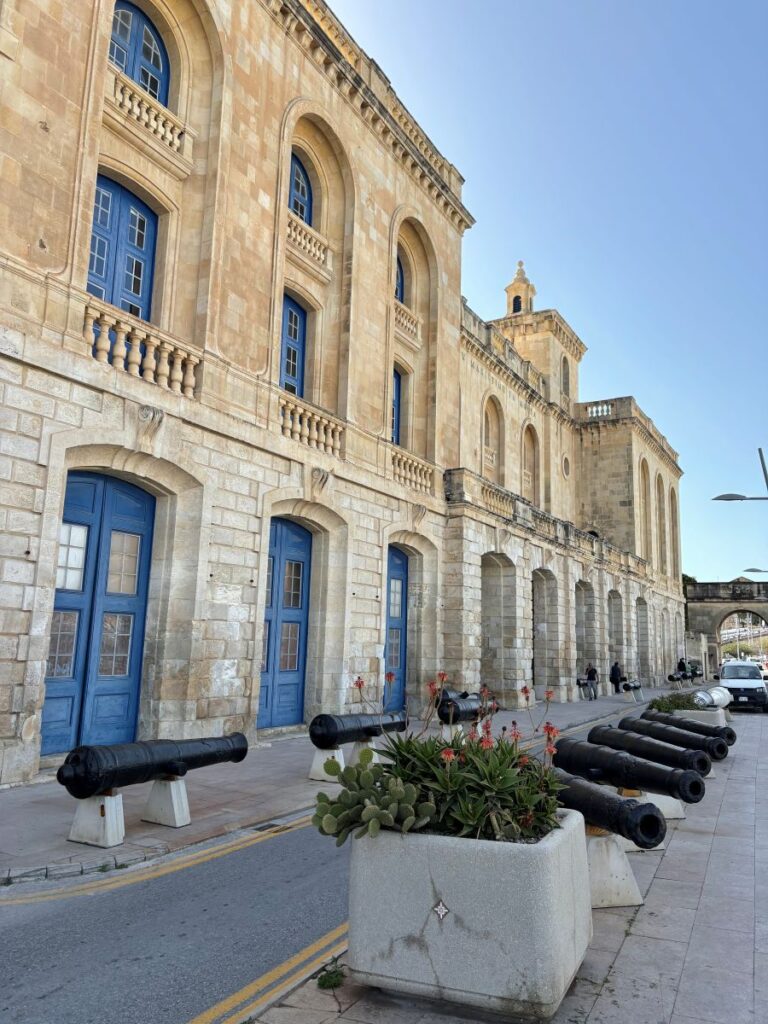
Senglea/L-Isla
The city where I first was introduced to Malta, that made me fall in love with this country. Senglea is Malta’s smallest city but also its most densely populated. With a large church at the centre that was rebuilt after is predecessor was destroyed in WWII; the city streets undulate across its small landscape.
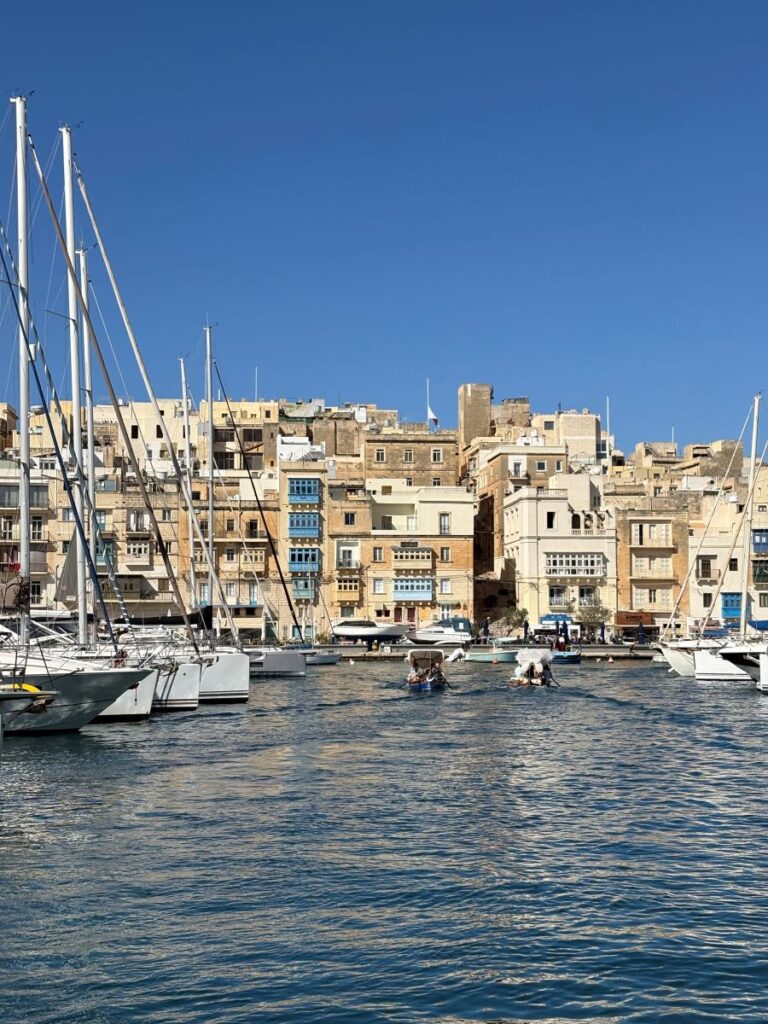
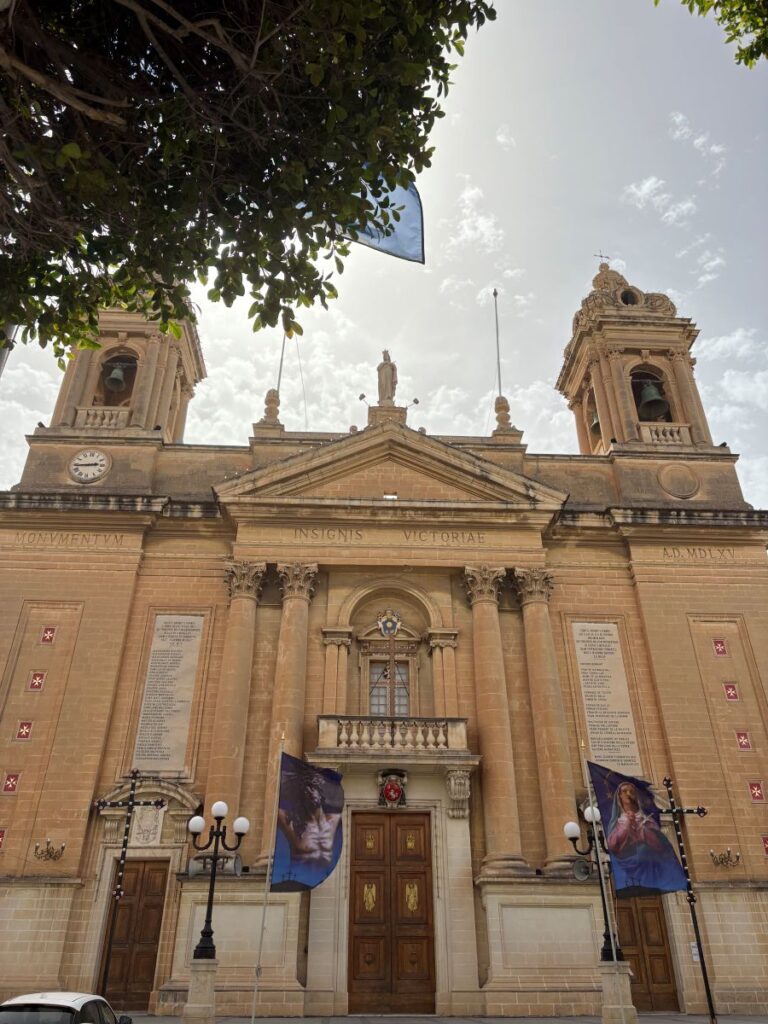
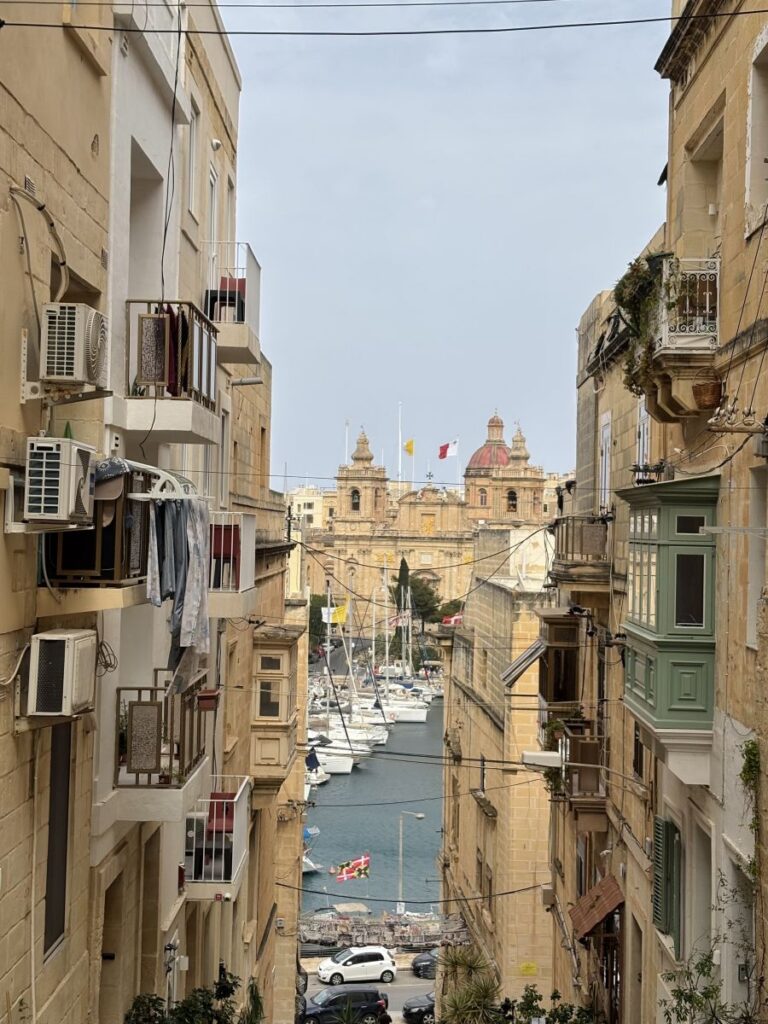
At the head of the peninsula is the Gardjola Gardens and the watchtower. Notice the ears and eyes as this was built to give warning of hostile forces entering the area. The city is constructed with a grid like pattern of streets in an area that is just over half a mile in size.
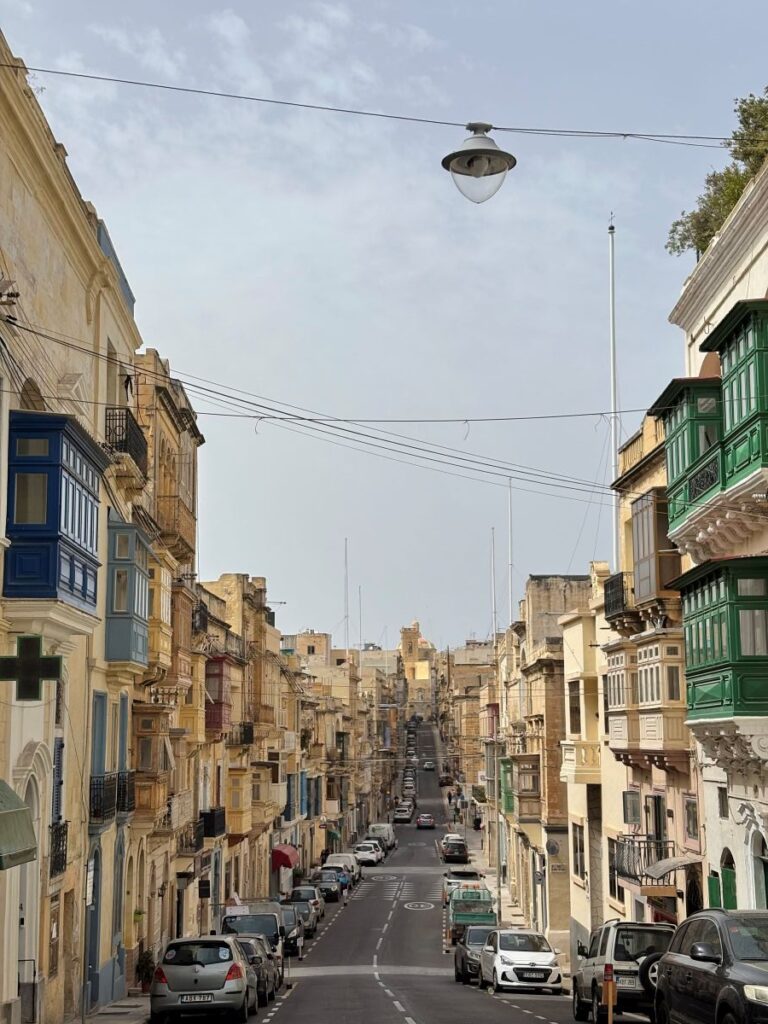
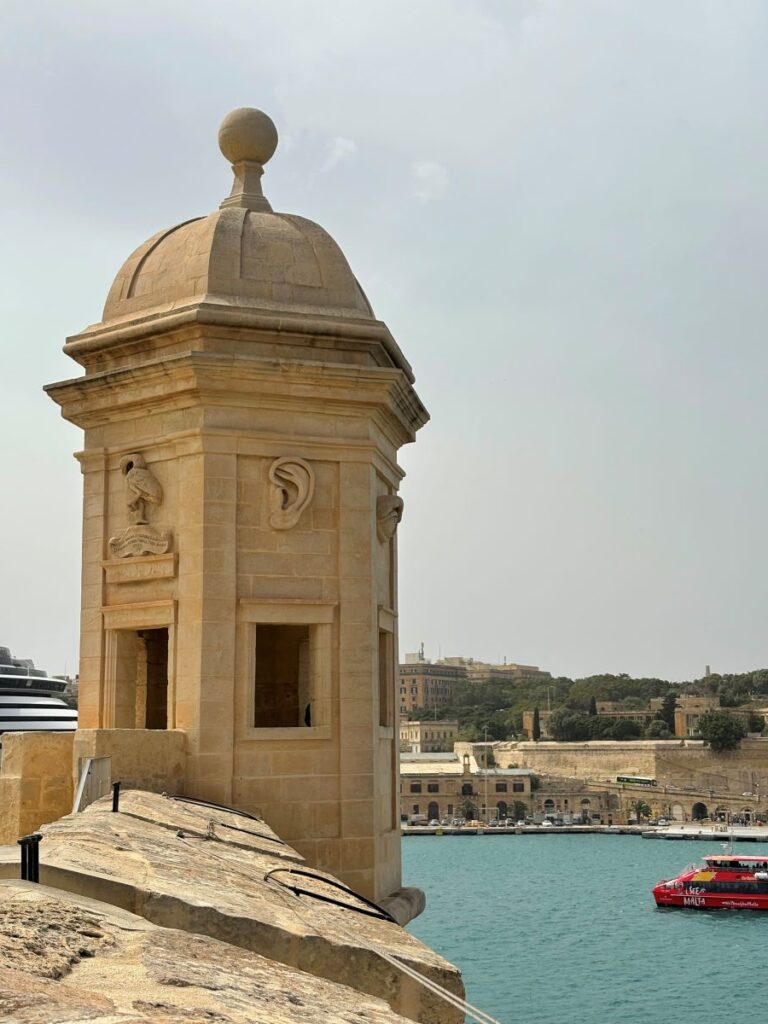
Where I find Birgu full of tour groups, Senglea is quieter, enjoying individual visitors. One does not feel like they are in a tourist haven here. There are a couple of tiny cafés, the public square in front of the church and an enchanting series of narrow streets.
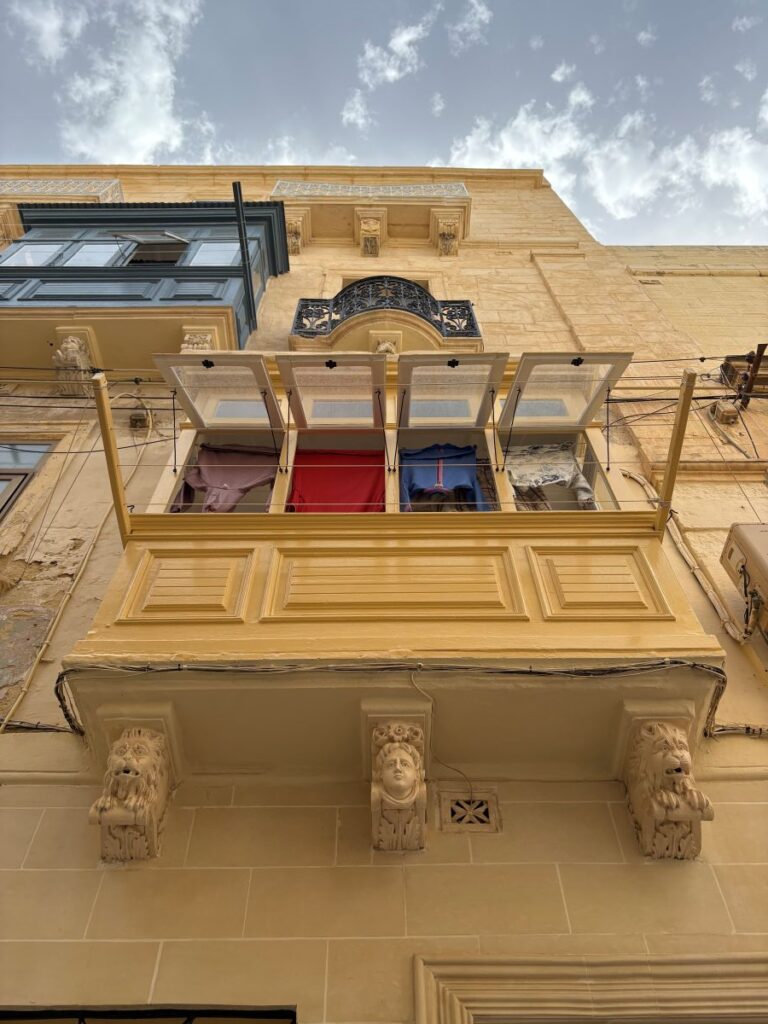
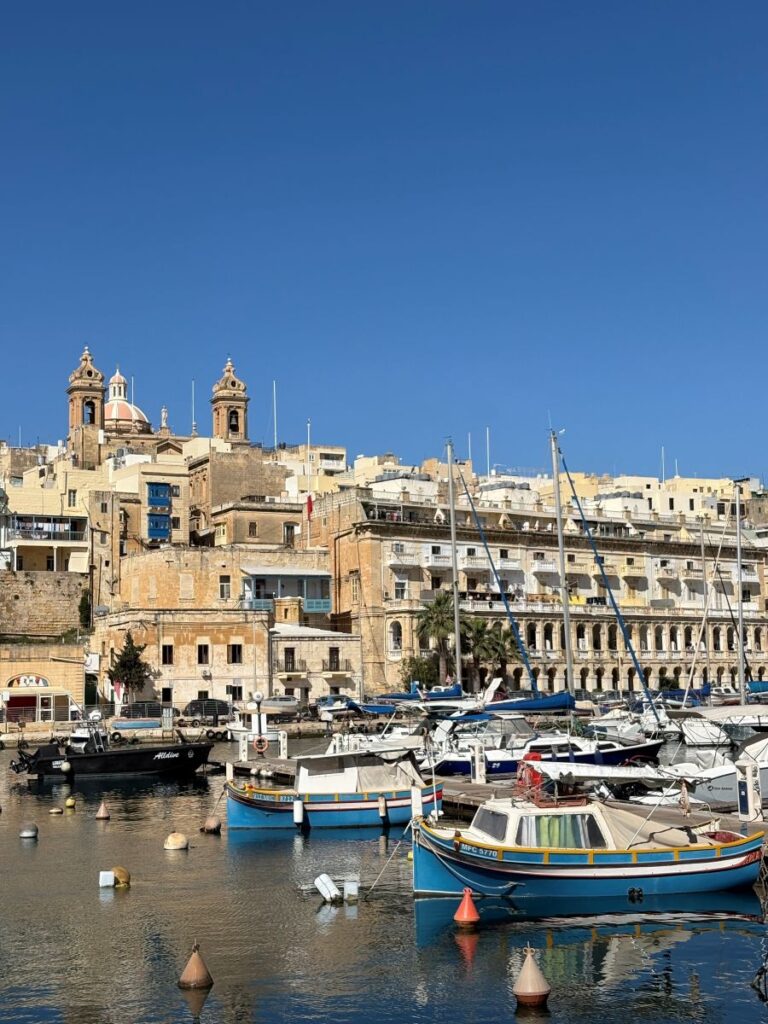
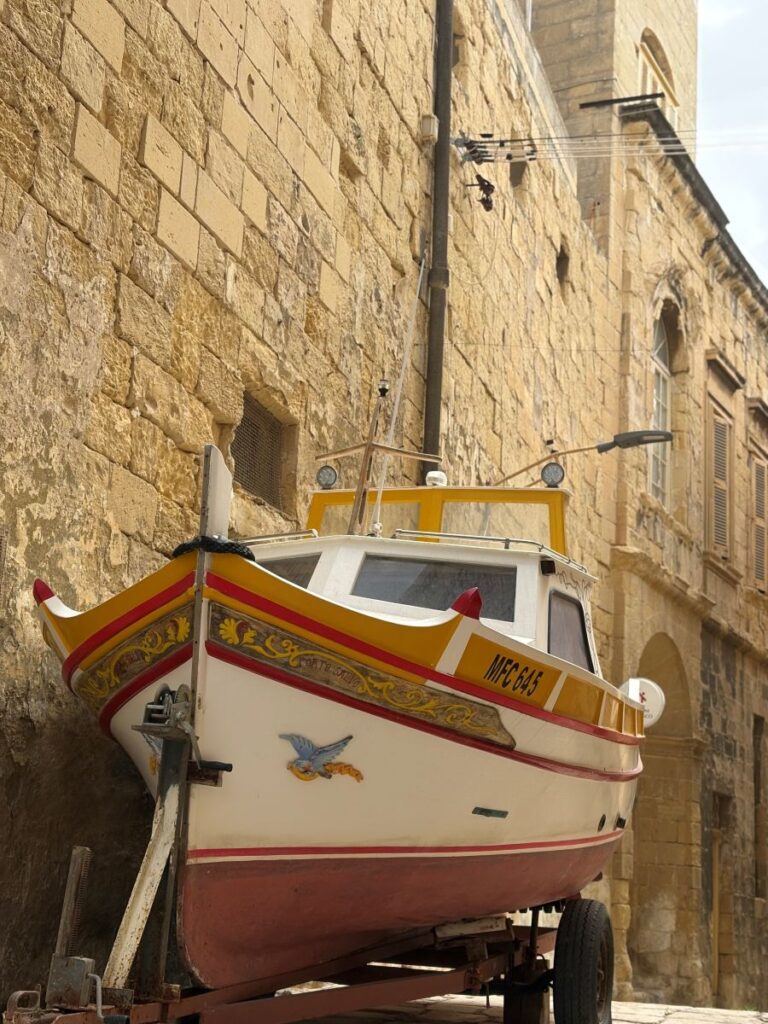
Other than the big church with its hidden graveyard full of victims of the 1676 plague and the beautiful harbour area, there is not a lot to bring tourists into this tiny city.
Bormla/Cospicua
The oldest of the Three Cities is Bormla. It is here I find myself situated on this visit to Malta. I am entrenched in history and enchanted by all that surrounds me. This double fortified city, served as the principal port of Phoenician Malta.
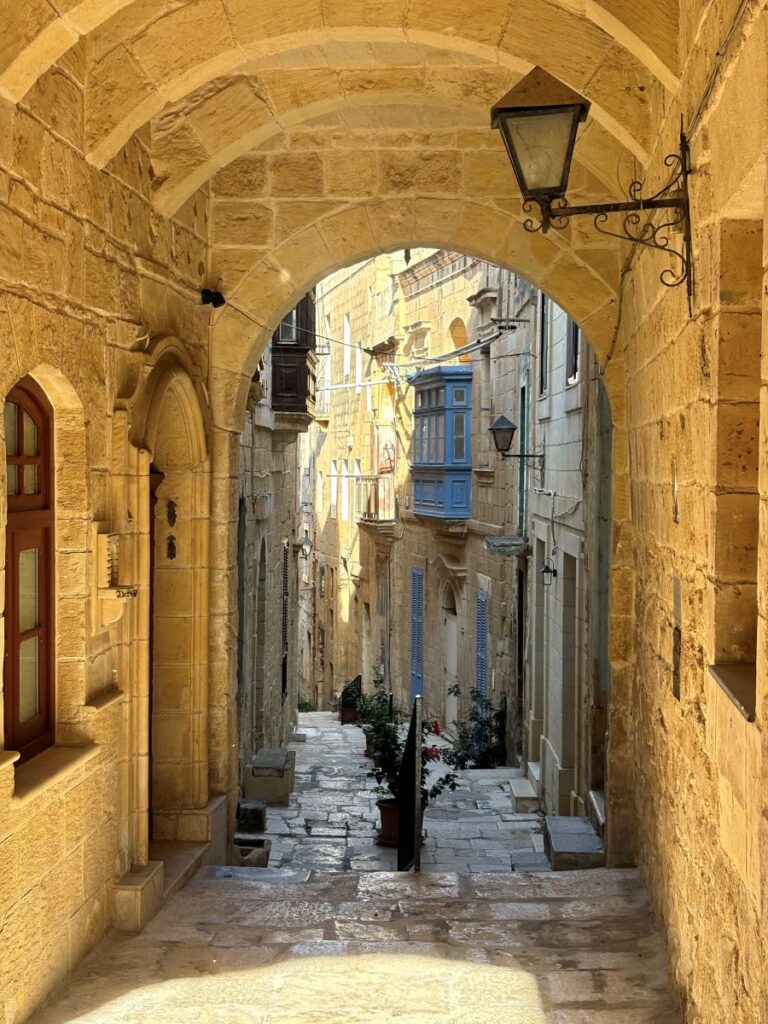
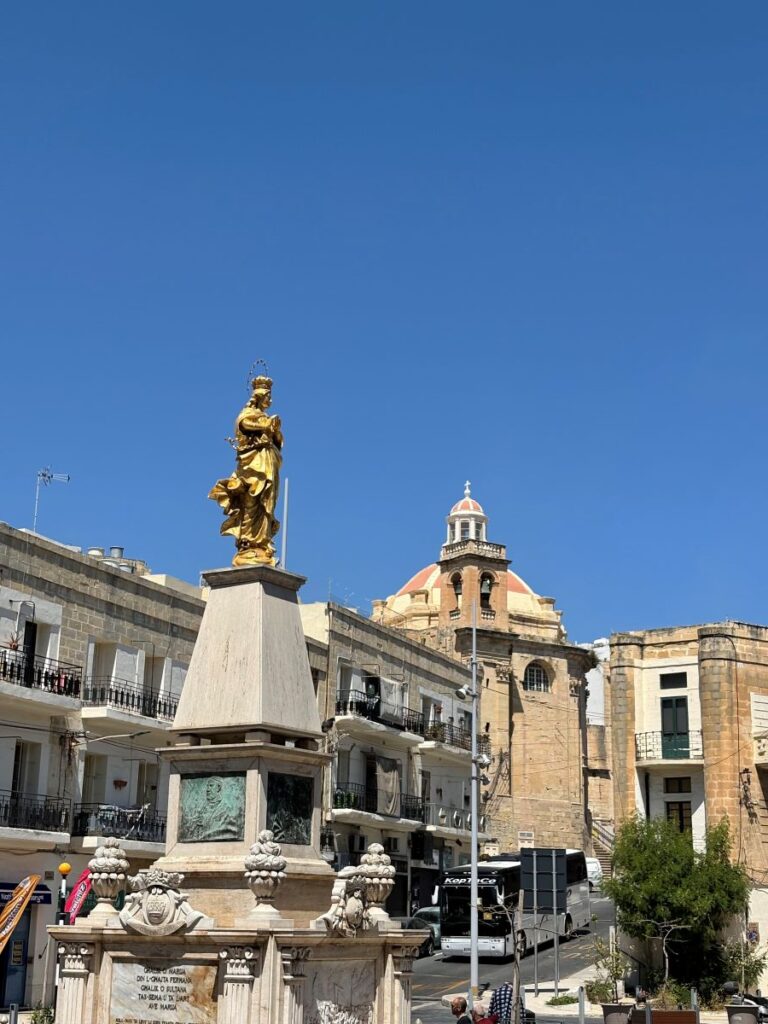

When the Order of Saint John arrived, it was here that they created the dockyard that was to play a pivotal role right up through British occupation. Today, that area of the harbour is being transformed into a university and park. Find Dock 1 here too, which is the place to catch the ferry over to Valletta.
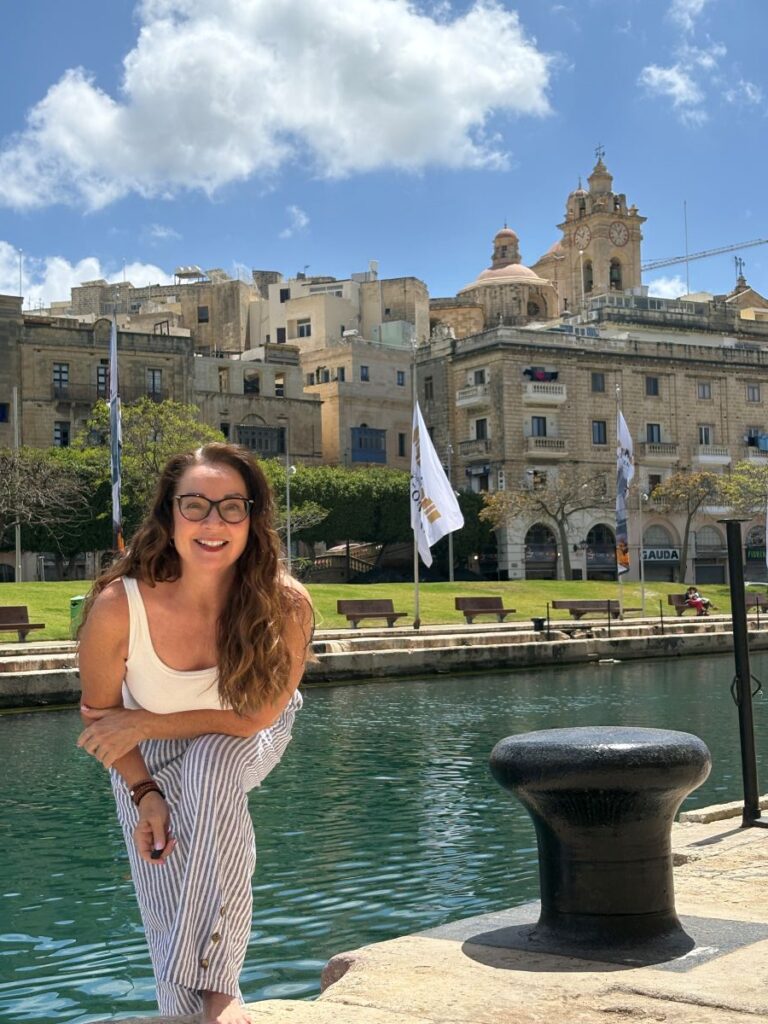
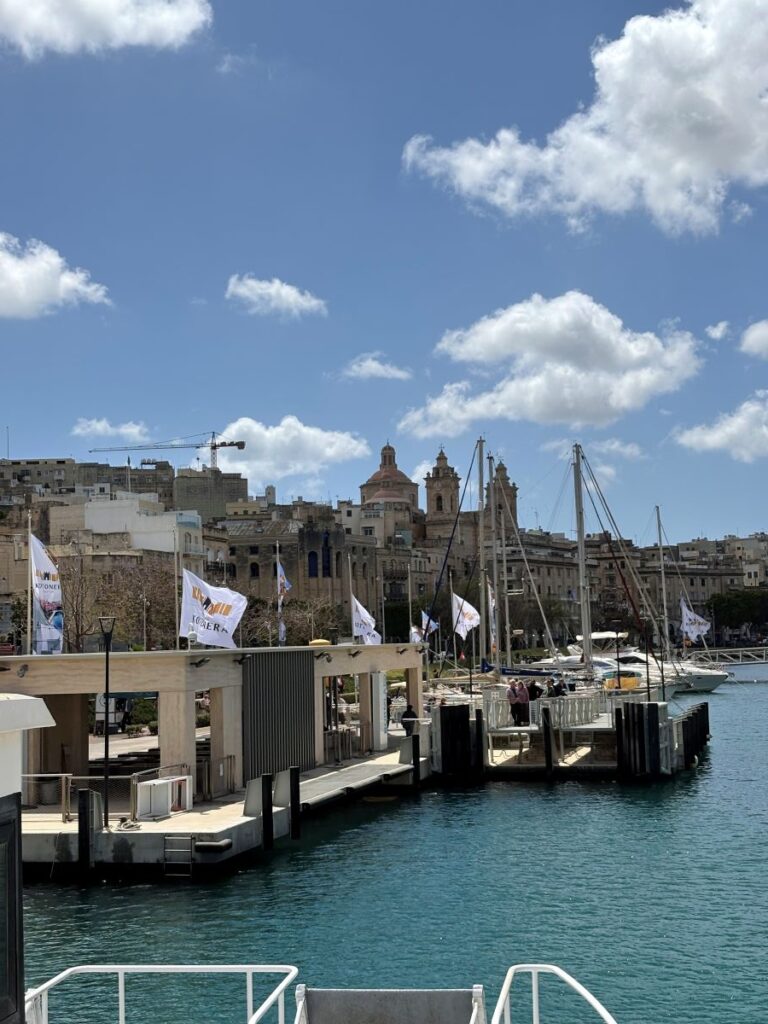
The streets in Bormla are hilly with the big church down at the belly of the inlet. The medieval limestone townhouses are incredibly beautiful, especially adorned with the colourful balconies and doors.
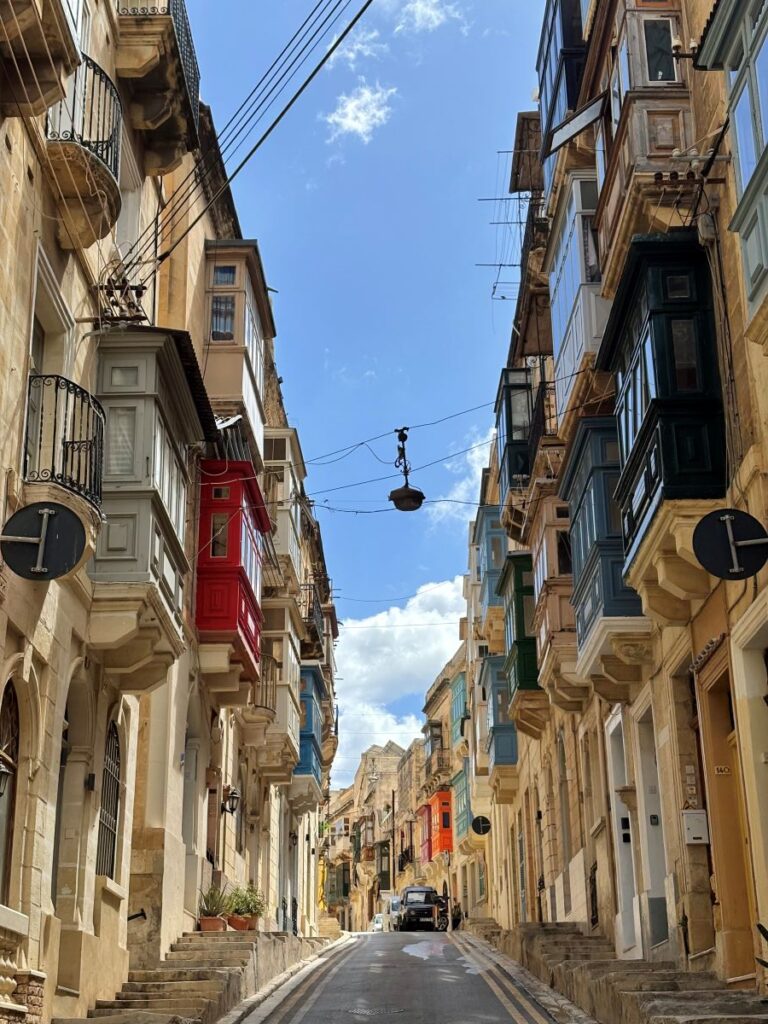
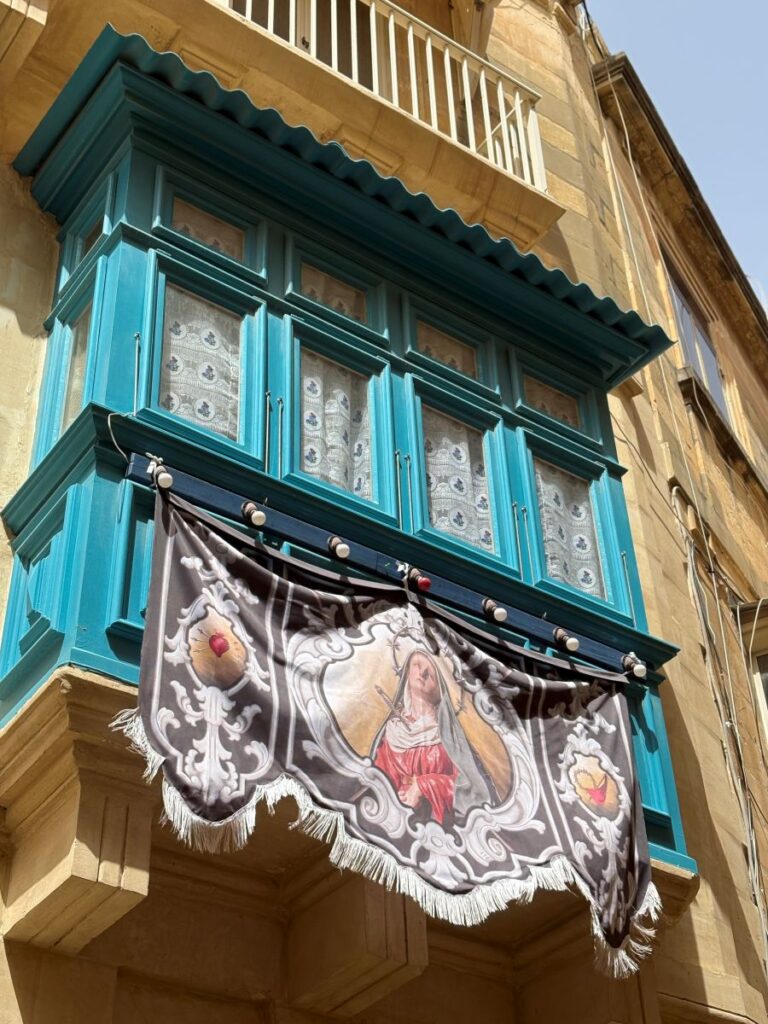
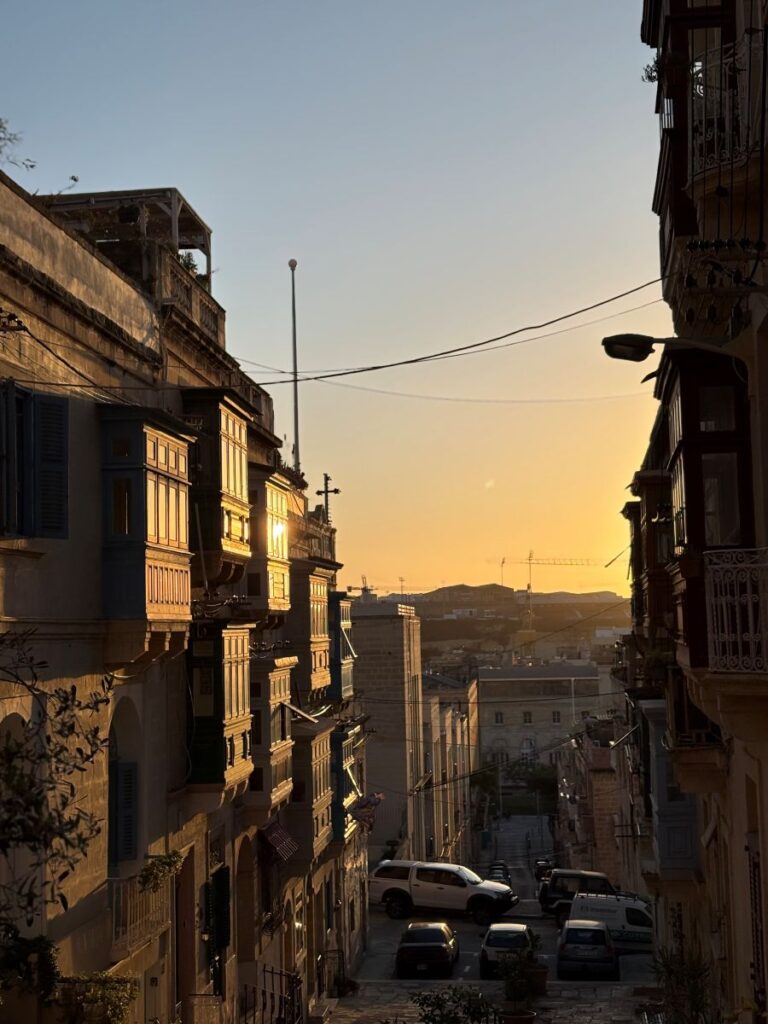
One thing that stands out in Cospicua is the heavy fortification from the 16th century. Both the Cottonera Lines and the Santa Margharita Lines come together here to form massive walls that enclose the city.
Where to Stay?
So, with all of that information, is this a good area to stay when one is visiting Malta? I would say yes, but with caveats. Firstly, and personally, I would avoid Birgu. There are simply too many tourists there, cruise ship tours specifically, bringing people into this tiny city. The noise and traffic is unpleasant. Birgu is best served as a day trip, or a beautiful place to wander early morning or late afternoons, after the visitors have left.
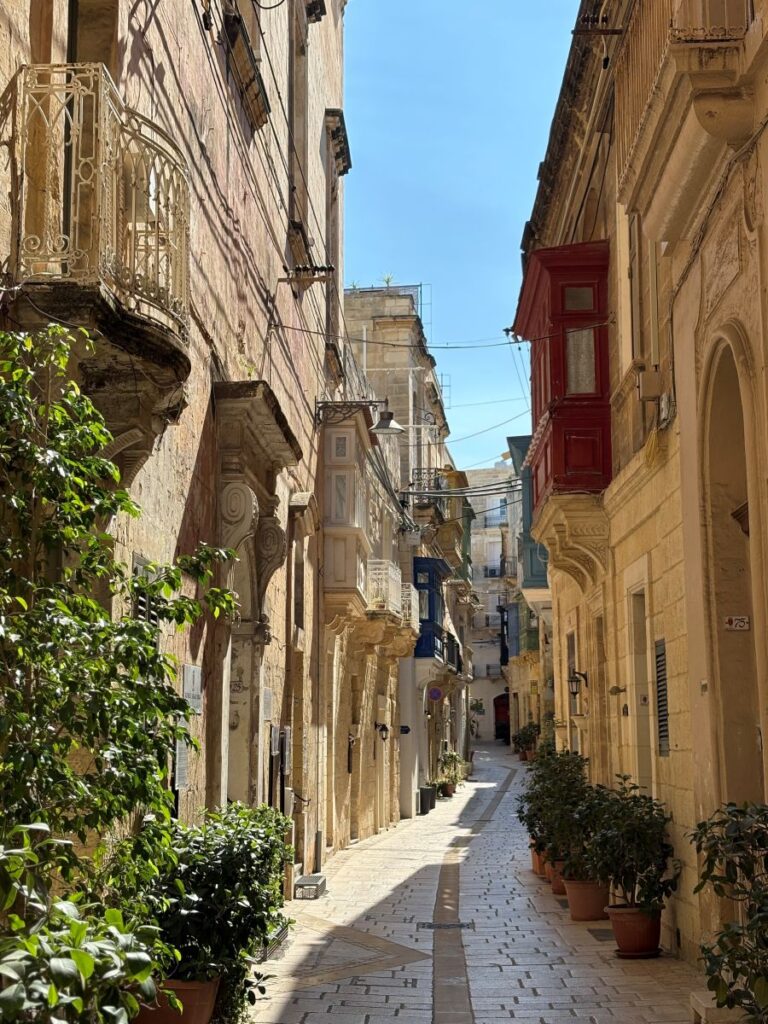
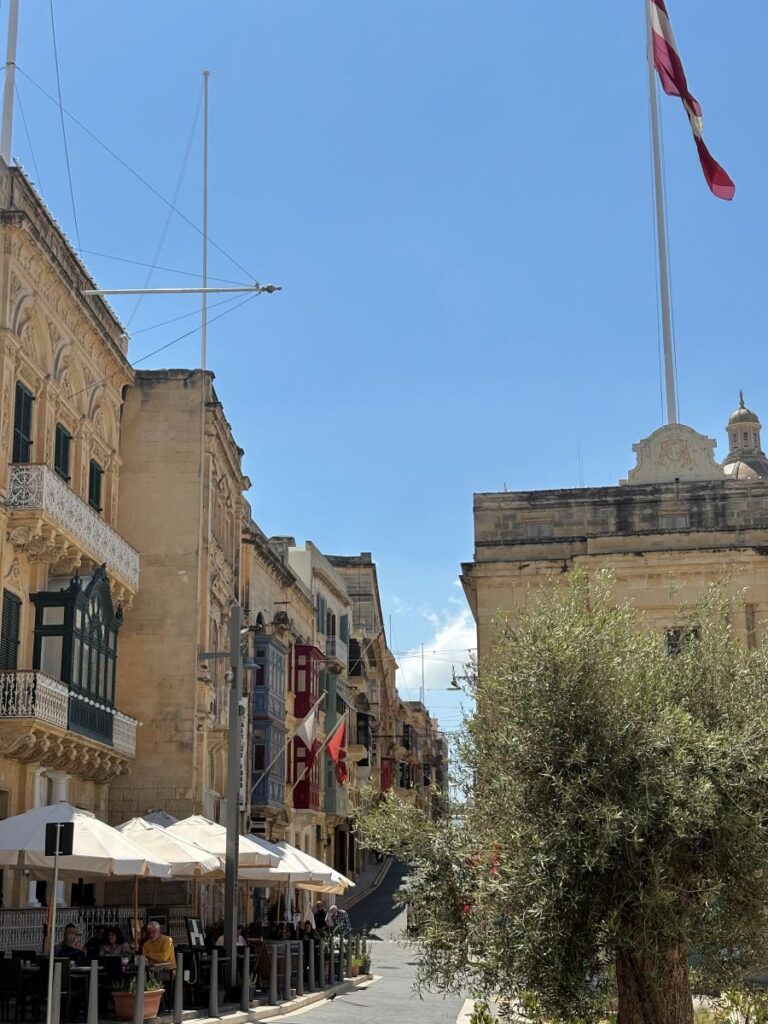
Senglea, yes. It still feels sleepy there. Often roads are empty, and besides the main street thru the city, there is very little vehicular traffic. It also sports a couple of quaint cafés and shops for one to pick up groceries and such.
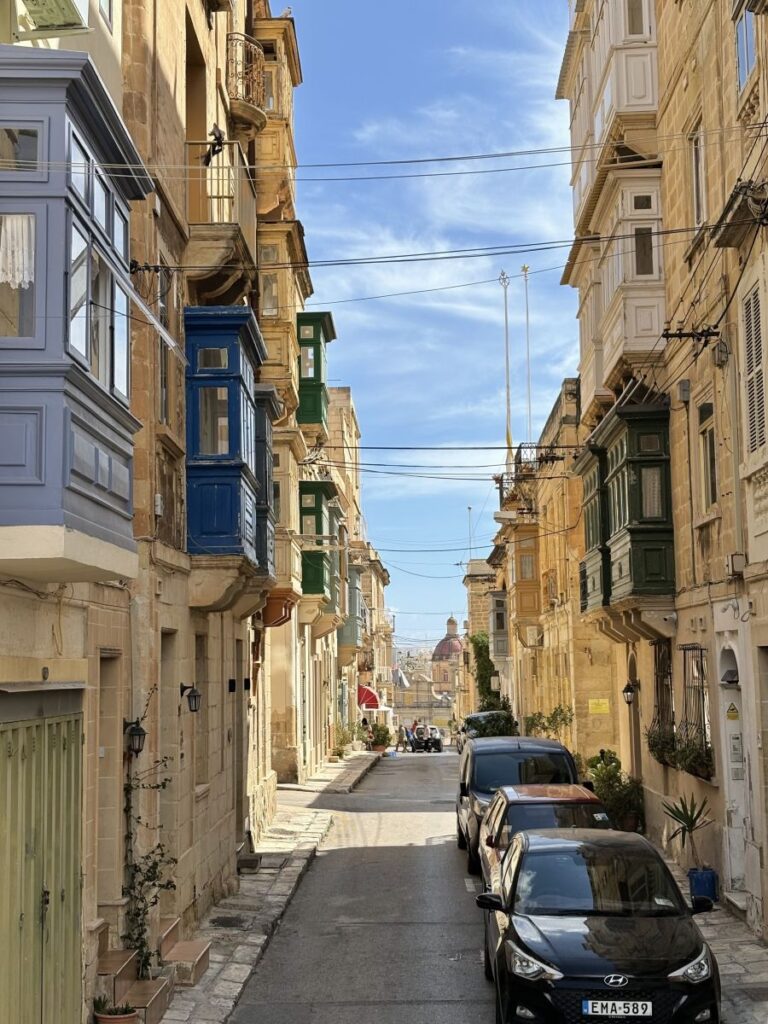
Cospicua, yes. Although I feel it is busier than Senglea, there are enough streets here when one can stay in a quiet area. Currently I am residing in a medieval stone house, utterly enchanting as I feel I’ve stepped back in time by 500 years. Down at the harbour, there are a number of restaurants, cafés and a good size convenience store too.
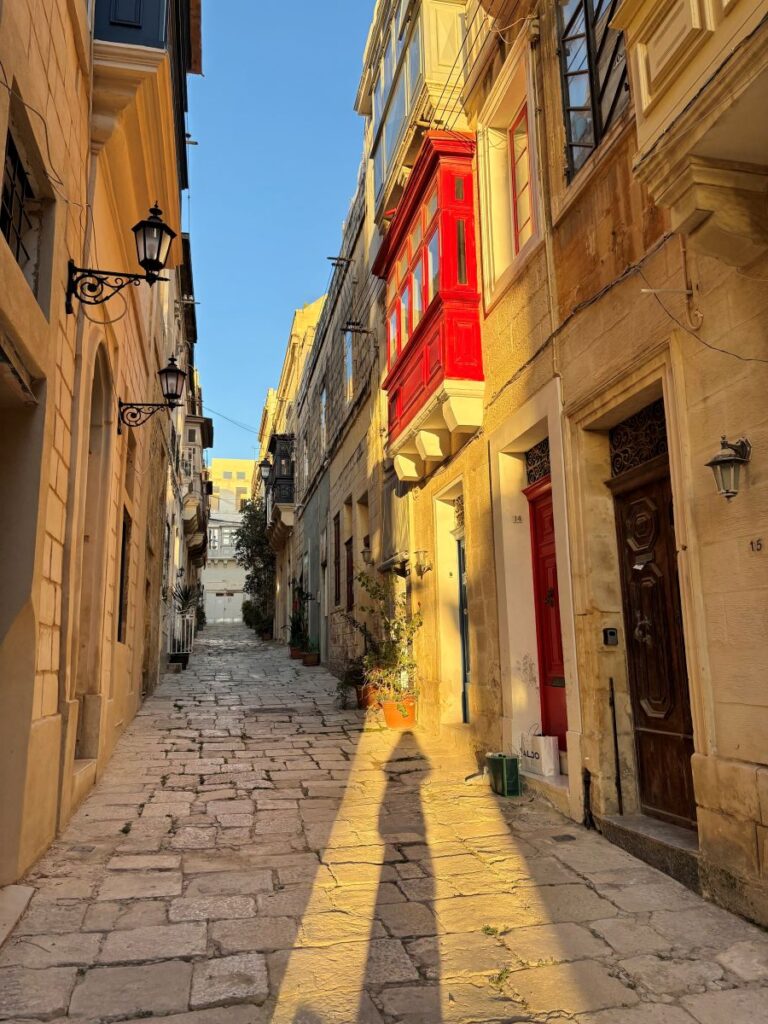
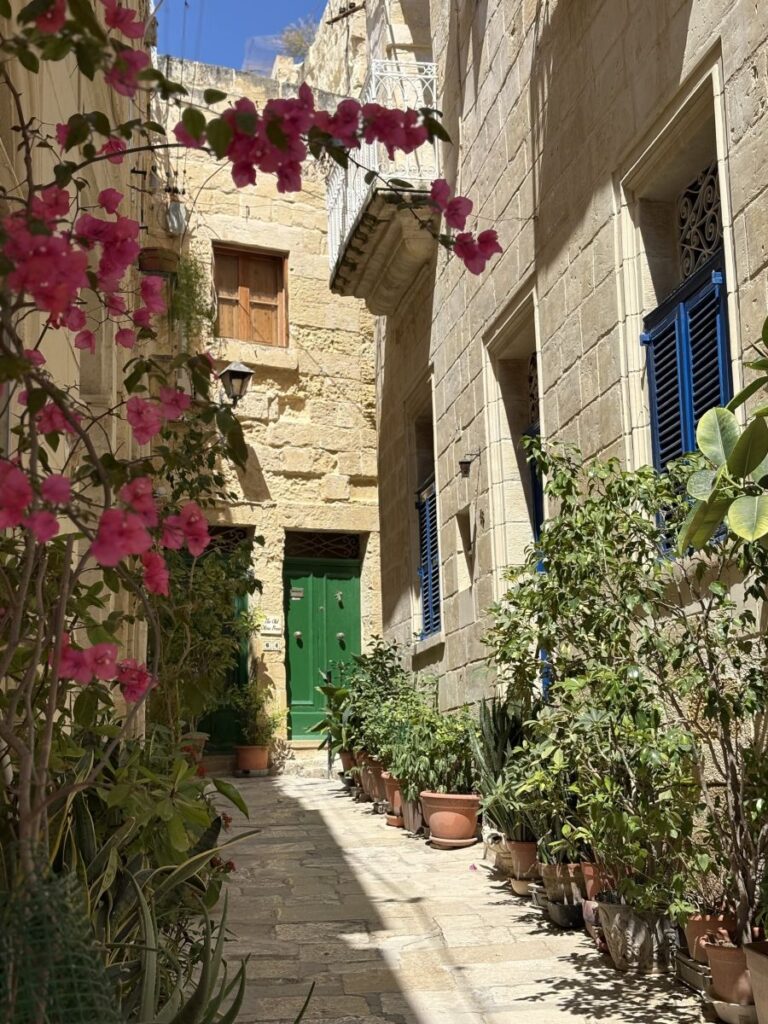
Cost
Malta is expensive! I struggle to find anything close to a budget friendly stay here at all. Of course, your accommodation costs are going to depend on so many aspects. Are you looking for a busy city atmosphere with hotels, clubs, shopping and nightlife? Then St Julien or Sliema will fit that bill. These area’s are as expensive as Valletta.
Looking for a few nights in the romantic yet crowded capital Valletta? There is that option too and possibly the most expensive.
If you are like me, and prefer quiet, charming and historical based cities, then one of these will be right up your alley. I cannot express enough; how delightful it is to stay here. Walking out my ancient front door, I look down the sun-soaked narrow stone street, and see old wooden balconies. I hear the ladies catching up on their daily gossip in an old Maltese dialect that is unique to the Three Cities.
The smell of heaviness and damp saturates these old limestone walls. I hear the church bells peel through the air. A child has just run down the street, his little feet clapping on the stones. I’m surrounded by a historical romance, full of stores, life, death, and everything in between. This is what the Three Cities holds for me and why I seem to return to them.
